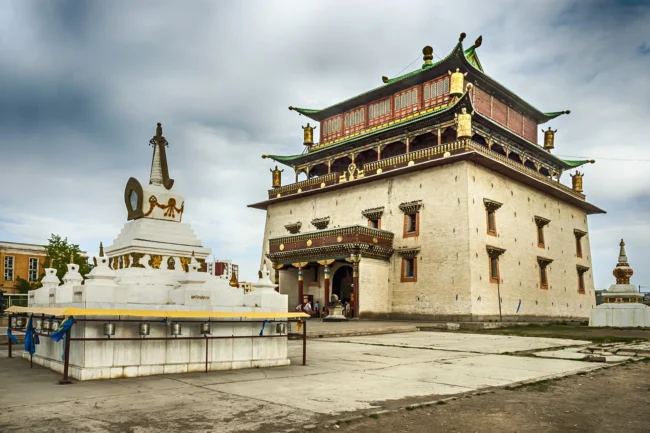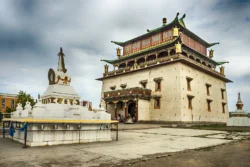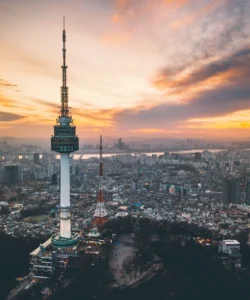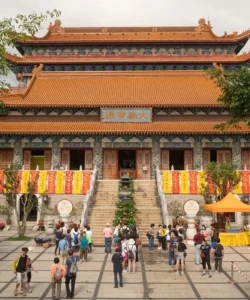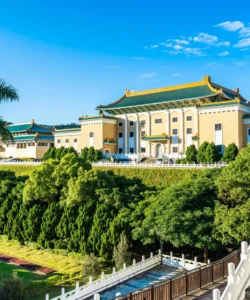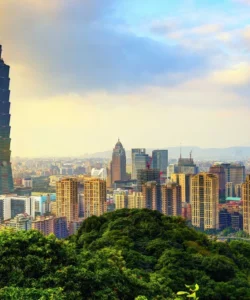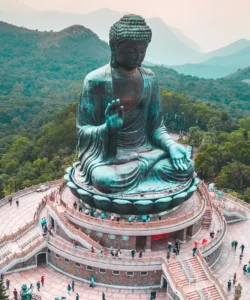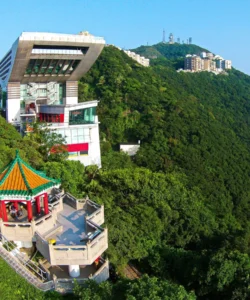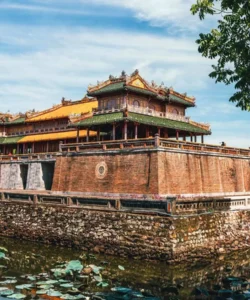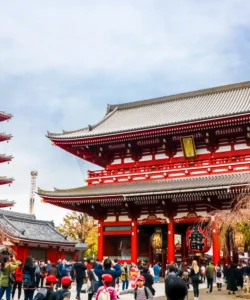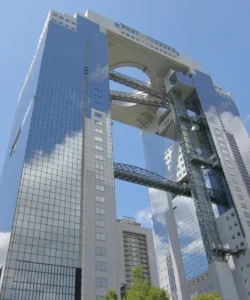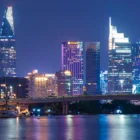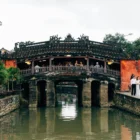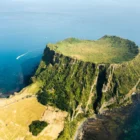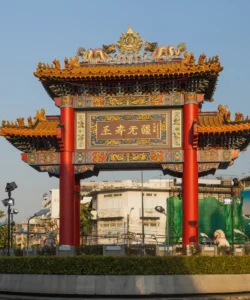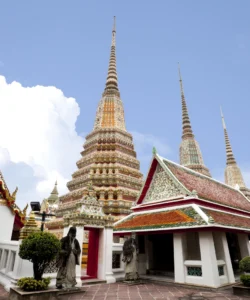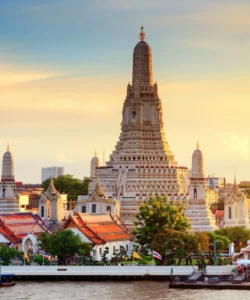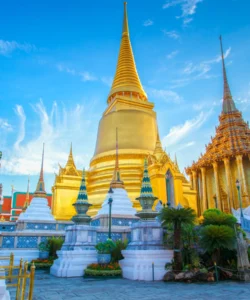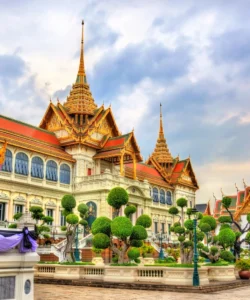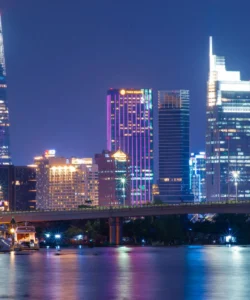Gandantegchinlen Monastery, often simply called Gandan Monastery, is one of Mongolia’s most significant and active Buddhist monasteries. Located in Ulaanbaatar, the capital, it serves as a vibrant center of Buddhist learning, practice, and culture, and is a powerful symbol of the resurgence of Buddhism in post-communist Mongolia.
Name: Gandantegchinlen Monastery (Mongolian: Гандантэгчинлэн хийд, Gandantegchinlen Khiid). “Gandan” means “great place of complete joy,” and “Tegchinlen” refers to “Mahayana” (the Great Vehicle), a branch of Buddhism.
Address: Gandantegchinlen Monastery, Ulaanbaatar, Mongolia. It is situated in the western part of the city center, easily accessible.
How to get there:
As it’s located within Ulaanbaatar, Gandantegchinlen Monastery is very easy to reach:
- By Taxi: Taxis are abundant in Ulaanbaatar and can take you directly to the monastery. Ensure you agree on a fare beforehand or use a metered taxi.
- By Public Bus: Numerous public bus routes stop near the monastery. You can check local bus maps or ask your hotel for the best route.
- On Foot: If you are staying in the central part of Ulaanbaatar, it might be a walkable distance, though it’s generally a bit too far for a casual stroll from the main Sukhbaatar Square area.
- Organized Tour: Many city tours of Ulaanbaatar include a stop at Gandan Monastery.
Landscape and Architecture:
Gandantegchinlen Monastery is a large complex of temples, prayer wheels, and monastic living quarters, reflecting a blend of Tibetan and traditional Mongolian architectural styles:
- Tibetan Influence: The architecture strongly reflects Tibetan Buddhist monastery design, with multi-tiered roofs, intricate carvings, vibrant colors, and extensive use of wood.
- Migjid Janraisig Temple: This is the most famous and largest temple within the complex, towering over the other structures. It houses the magnificent 26.5-meter (87-foot) tall gilded statue of Avalokiteshvara (Migjid Janraisig in Mongolian), adorned with precious stones and silk. The original statue was destroyed by communists, and the current one was reconstructed in 1996 through public donations.
- Dashi-Choilon Temple: Another significant temple within the complex, often used for daily prayers and philosophical debates by monks.
- Tsogchin Temple: The main assembly hall where monks gather for daily rituals and ceremonies.
- Dozens of Smaller Temples and Buildings: The complex includes various other smaller temples, monastic schools, libraries, and administrative buildings.
- Prayer Wheels and Stupas: Throughout the grounds, numerous large and small prayer wheels (khurde) and stupas (suburga) are present, which devotees circumambulate while chanting mantras.
- Monastic Atmosphere: The air is often filled with the chanting of monks, the scent of incense, and the sound of prayer wheels, creating a profoundly spiritual and active atmosphere.
- Monk’s Quarters: The surrounding area also includes the living quarters for the hundreds of monks who reside and study at Gandan.
What makes it famous:
Gandantegchinlen Monastery is famous for:
- Symbol of Buddhist Revival: After being one of the only monasteries allowed to remain open (though largely as a museum and only nominally active) during the communist purges of the 1930s (which destroyed almost all other monasteries in Mongolia), Gandan became the crucial center for the revival of Buddhism in Mongolia after the democratic revolution of 1990.
- Migjid Janraisig Statue: The towering, glittering statue of Avalokiteshvara is its most iconic feature and a testament to the Mongolian people’s devotion and resilience. It’s one of the largest indoor statues in the world.
- Active Buddhist Center: Unlike many historical monasteries that are now primarily museums, Gandan is a fully functional and active monastery with hundreds of monks. Visitors can witness daily prayers, rituals, and philosophical debates, offering a genuine insight into living Buddhism.
- Architectural Grandeur: Its scale and intricate Tibetan-Mongolian architecture make it an impressive sight, standing out in the Ulaanbaatar cityscape.
- Cultural Significance: It plays a vital role in preserving Mongolian Buddhist traditions, art, and philosophy, acting as a beacon for spiritual and cultural continuity.
Differences from some other wonders:
Gandantegchinlen Monastery offers a distinct experience compared to other wonders, especially other Mongolian monasteries or religious sites:
- Urban, Living Monastery: While Erdene Zuu Monastery (in the Orkhon Valley) is a major historical monastery in a rural setting that was largely destroyed and then partially restored, Gandan is a thriving, active monastery located within the bustling capital city. It was mostly preserved (albeit limited) during the communist era, which allowed for a more direct and immediate re-flourishing after 1990. Its daily vibrant activity of hundreds of monks sets it apart from many historical religious sites.
- Symbol of Revival: Its significance lies not just in its age or architecture, but profoundly in its role as the epicenter of Mongolian Buddhism’s modern revival after decades of suppression. This narrative of resilience and resurgence is central to its fame, unlike religious sites that may have had a more continuous, uninterrupted history of practice.
- Specific Gilded Statue: While many temples house statues, the colossal, gilded, and recently reconstructed Migjid Janraisig statue is a very specific and dramatic focal point that draws visitors and holds deep spiritual meaning, representing national healing and resurgence.
- Accessibility and Context: Being in Ulaanbaatar, it’s far more accessible than remote monasteries, providing an easy entry point for visitors to experience Mongolian Buddhism without extensive travel into the countryside. It offers an urban interpretation of a deeply traditional practice.
In summary, Gandantegchinlen Monastery is more than a historical site; it’s a dynamic spiritual powerhouse, a living testament to the enduring faith of the Mongolian people, and a magnificent display of Buddhist art and architecture right in the heart of their modern capital.
